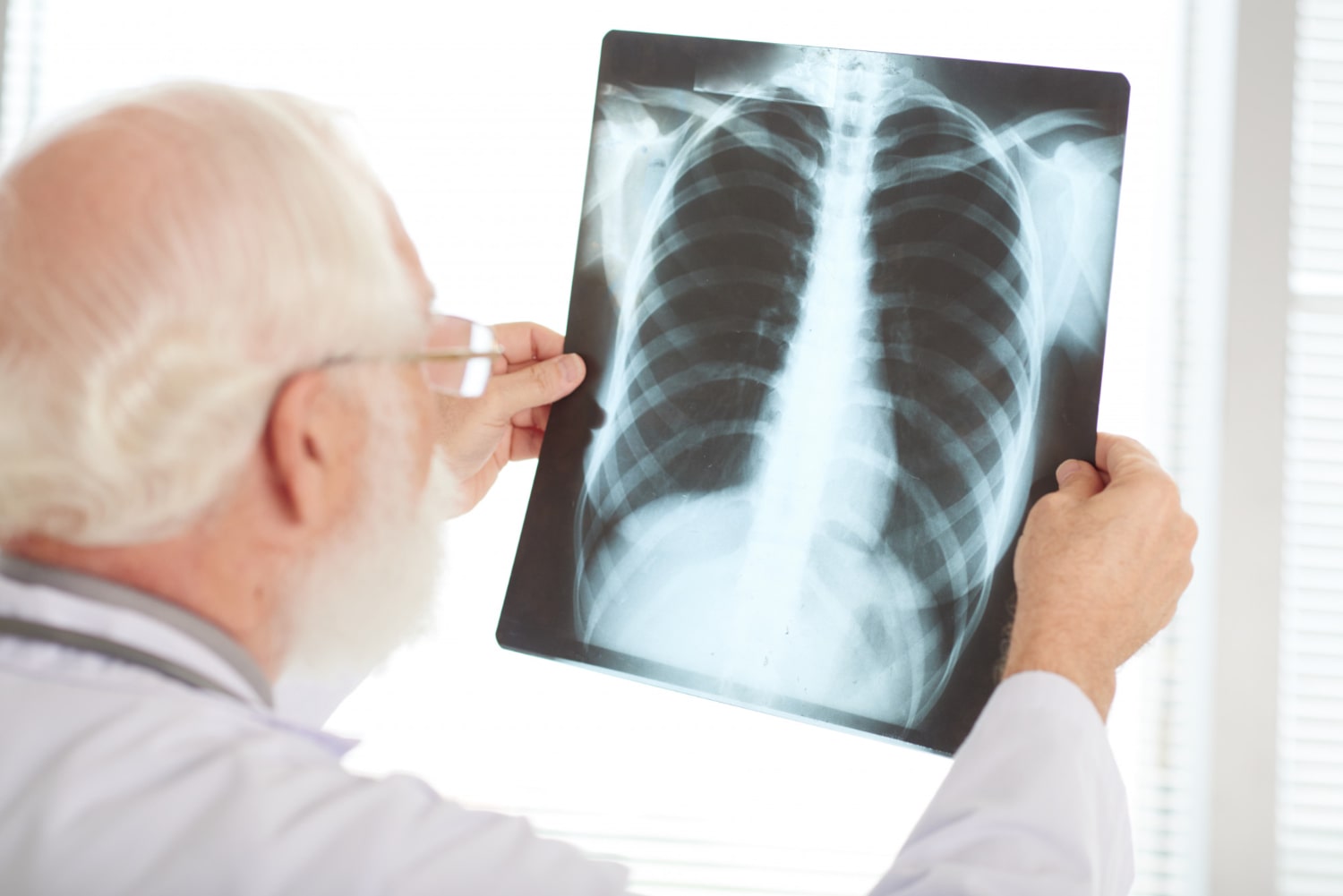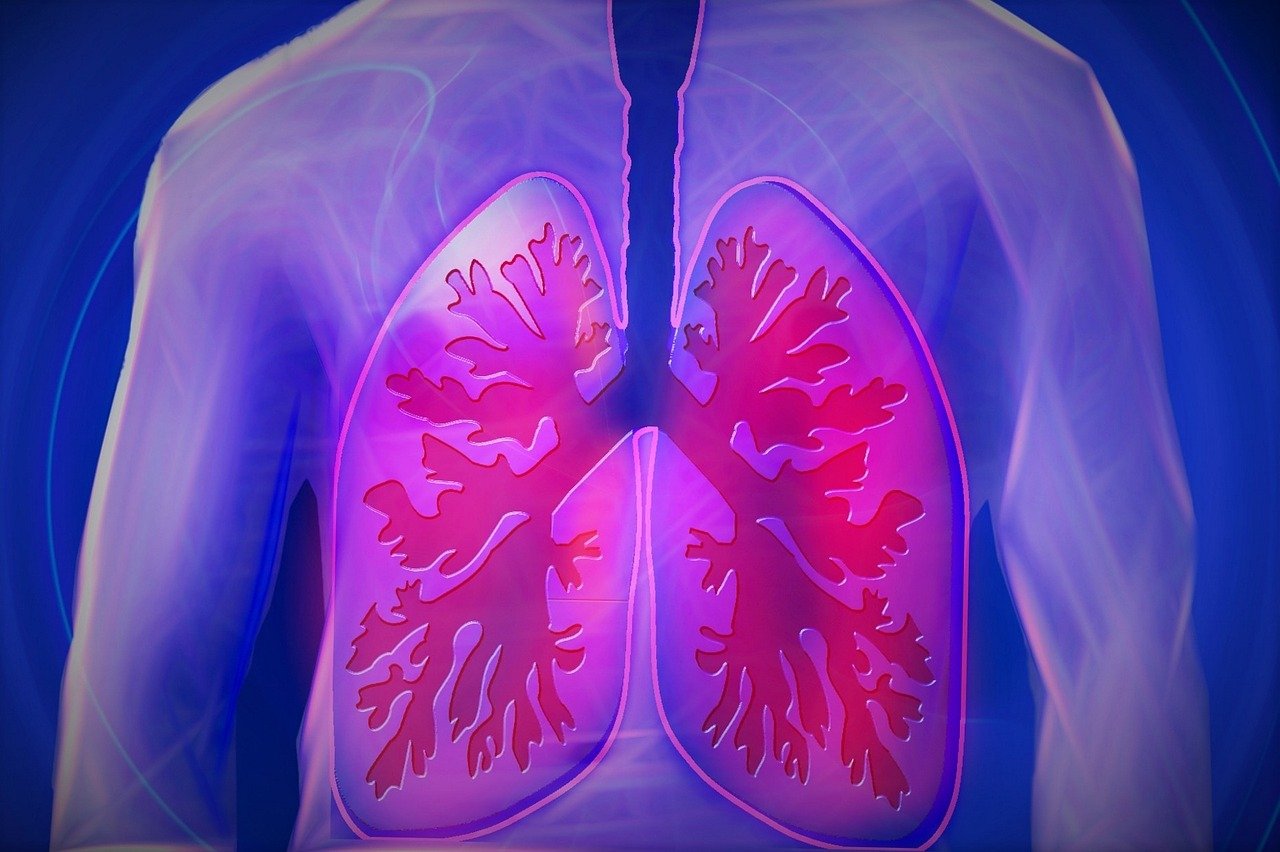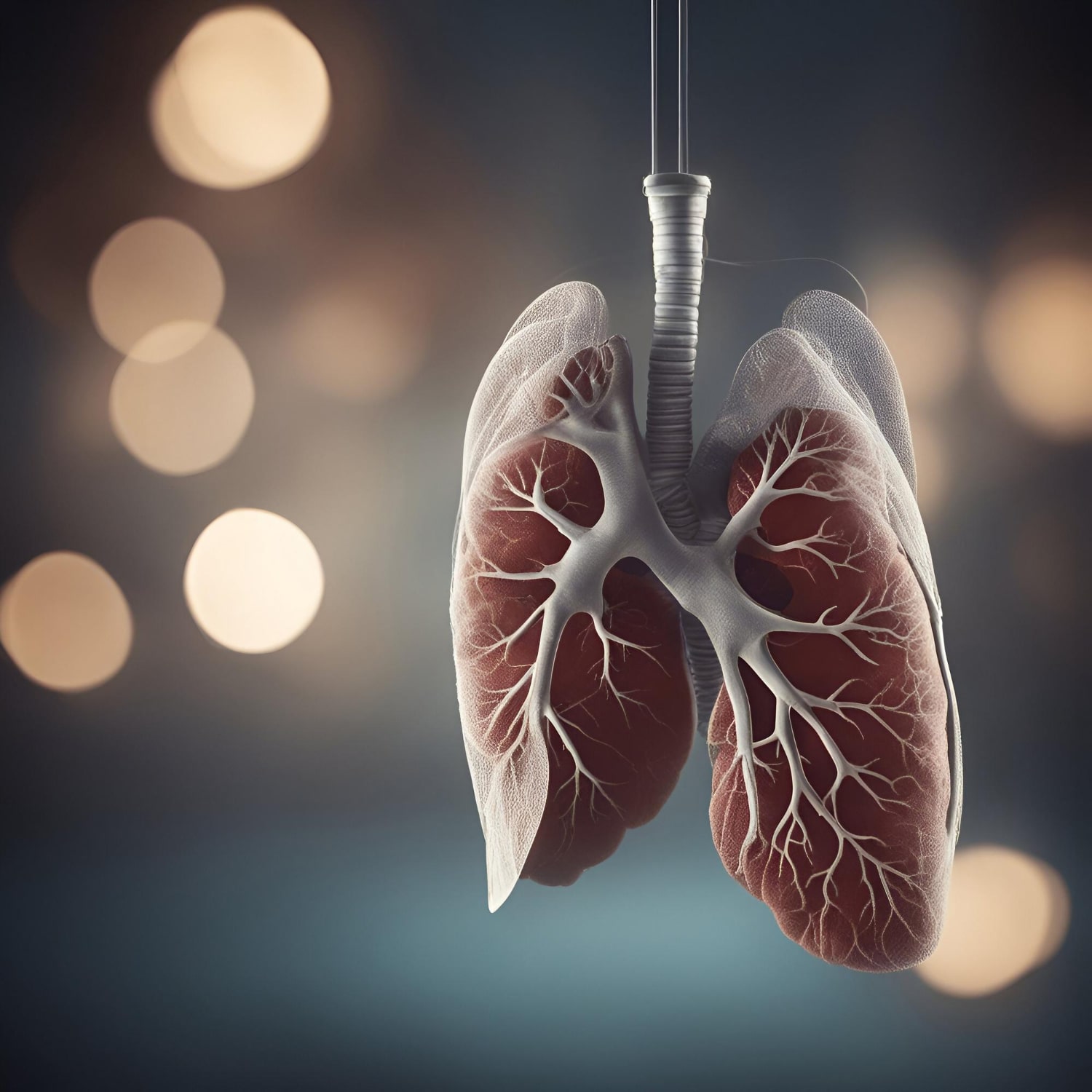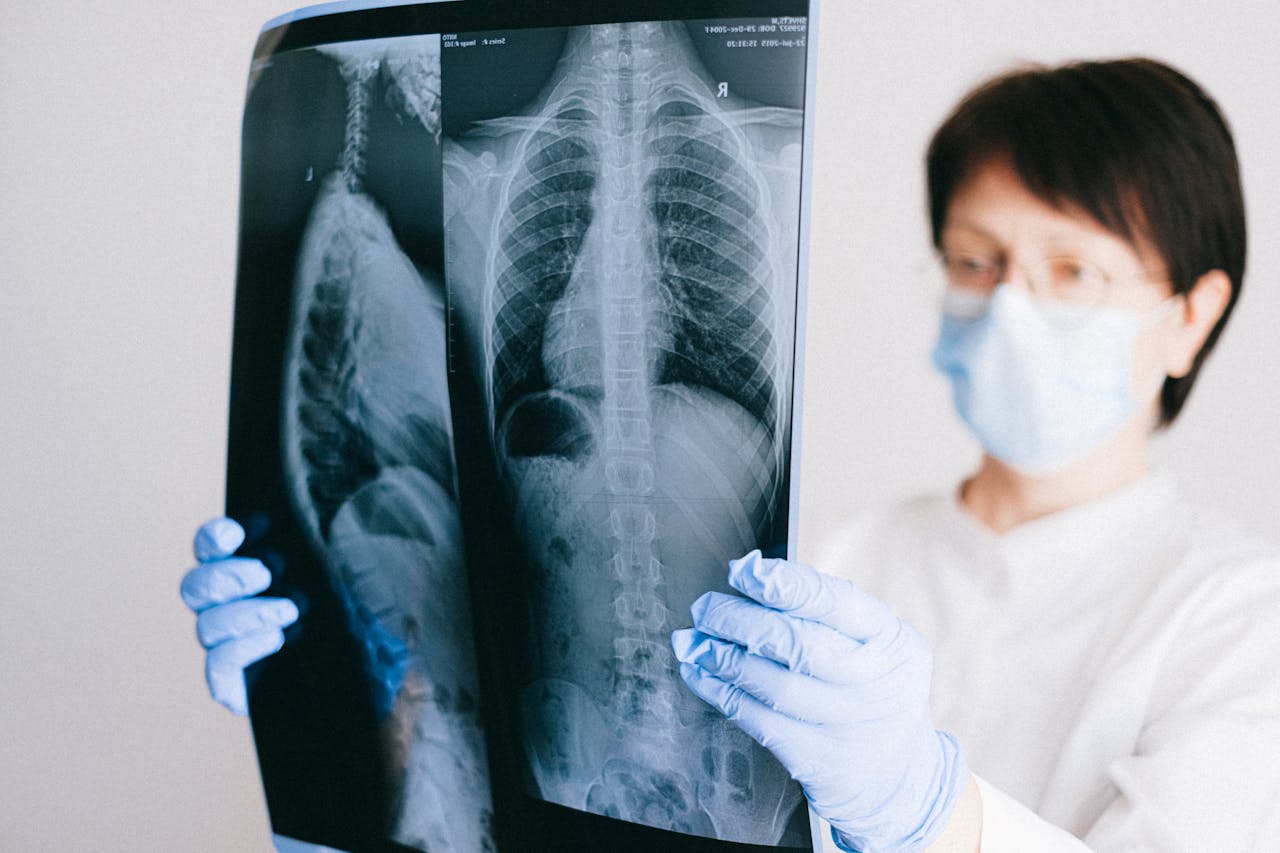What causes lung collapse? Lung collapse is one of the diseases associated with the lungs. It can occur in two forms: pneumothorax and atelectasis, and it can develop due to various reasons. Individuals experiencing lung collapse may face certain difficulties that can severely impact their lives. To alleviate these issues, it is crucial to consult a doctor.
There are multiple answers to the question of what causes lung collapse. First, it is essential to understand that many conditions can lead to problems in the lungs. The lungs are vital and sensitive organs, and many harmful factors can negatively affect them. Being aware of these factors and acting cautiously is necessary. So, what causes lung collapse?
What Is Lung Collapse?
 What causes lung collapse? Scientifically known as pneumothorax, lung collapse refers to the entry of air into the pleural space outside the lungs. Air entering the pleural space prevents the lungs from expanding and causes them to shrink. Consequently, individuals experience complaints such as shortness of breath and sudden chest pain. In this condition, air accumulates in the chest cavity due to various reasons and puts pressure on the lungs, preventing them from expanding.
What causes lung collapse? Scientifically known as pneumothorax, lung collapse refers to the entry of air into the pleural space outside the lungs. Air entering the pleural space prevents the lungs from expanding and causes them to shrink. Consequently, individuals experience complaints such as shortness of breath and sudden chest pain. In this condition, air accumulates in the chest cavity due to various reasons and puts pressure on the lungs, preventing them from expanding.
In pneumothorax, air fills the space between the lungs and the chest cavity, exerting pressure on the lungs. As a result, the lung loses its air and cannot expand, leading to shrinkage. This condition, depending on its location and severity, can sometimes result in serious consequences. Therefore, early diagnosis and detection are critical. The answer to the question of what causes lung collapse depends on the type of lung collapse. Lung collapse occurs in two forms:
| Type of Lung Collapse | Description |
|---|---|
| Pneumothorax | Pneumothorax-type lung collapse, commonly referred to simply as “lung collapse,” is the more frequent form. It occurs when a blister around the lung bursts, causing air to accumulate between the lung and the chest wall. This external pressure causes the lung to collapse, preventing air from entering. |
| Atelectasis | Atelectasis-type lung collapse happens due to factors like mucus accumulation in the airway or tumors obstructing airflow. This prevents sufficient air from entering specific regions of the lung, leading to localized collapse. |
What Are the Symptoms of Lung Collapse?
Pneumothorax directly affects breathing and the chest area. Air filling the chest cavity puts pressure on the lungs, preventing them from expanding freely and causing them to shrink. This results in symptoms such as shortness of breath and chest pain.
It is essential to be fully aware of the symptoms of this condition. Recognizing the symptoms enables prompt medical attention. Lung-related illnesses should not be ignored. If you experience any problems with your breathing or chest area, do not hesitate to consult your doctor. Here are the symptoms of pneumothorax:
- Chest Pain
- Shortness of Breath
- Cough
- Cyanosis
- Swelling
- Fatigue
- Tachycardia
Who Is at Risk of Lung Collapse?

The question of who is at risk of lung collapse is frequently asked. This condition can occur in individuals of all ages but is more common among those who lead unhealthy lifestyles. In some cases, it develops spontaneously. The condition often occurs spontaneously during one’s lifetime.
Additionally, certain risk groups exist. Thin, tall, dark-skinned males aged 20–25 are more likely to experience this condition. In women, lung collapse can occur due to chocolate cysts during menstrual periods. Men are generally at higher risk of this condition compared to women.
Is Lung Collapse Fatal?
Is lung collapse dangerous? Patients and their families often wonder if this condition is fatal. Pneumothorax, though rarely, can lead to fatal outcomes. While it does not carry the same fatal risks as lung cancer, severe complications such as damage to the lung membrane can be life-threatening.
If air accumulation around the lung is excessive following a blister burst, it can create pressure on the heart and lungs, causing sudden blood pressure drops. Recognizing the symptoms and seeking immediate medical attention is crucial to mitigate risks.
Can Lung Collapse Be Treated?
The recovery time for lung collapse varies depending on the treatment. Typically, patients recover within a few days after treatment. Most patients recover within 2–3 days following bronchoscopy procedures.
The strength of the patient’s immune system is a key factor in recovery time. The medications used during treatment also play a role, but potential side effects must be considered.
Treatment for Lung Collapse
Different approaches are available for treating this condition. It is essential to obtain a detailed medical history of the patient and consider symptoms such as shortness of breath, chest pain, and back pain to determine the appropriate treatment method.
The extent of collapse, the presence of chronic conditions, and whether the patient has experienced lung collapse before should also be considered. In some cases, patients are simply observed, and symptoms are monitored. In more pronounced cases, air is removed from the chest cavity using a specialized syringe, a drain is placed, or closed surgery is performed.
One of the country’s leading doctors in the field of Thoracic Surgery, Prof. Dr. Semih Halezeroğlu, performs very successful interventions in the treatment of lung diseases. Halezeroğlu, who is the Head of the Department of Thoracic Surgery at Acıbadem University Faculty of Medicine, performs serious treatments in the field of thoracic surgery together with his team.
What Causes Lung Collapse? Here Are 9 Reasons!
 Pneumothorax-type lung collapse often occurs due to the rupture of blisters around the lung, increasing internal air pressure. This condition is more common among young, tall, thin men. So, what causes lung collapse? Here are nine reasons:
Pneumothorax-type lung collapse often occurs due to the rupture of blisters around the lung, increasing internal air pressure. This condition is more common among young, tall, thin men. So, what causes lung collapse? Here are nine reasons:
- Sudden pressure changes, such as during air travel or diving
- Severe or penetrating chest injuries
- Diseases damaging lung tissue, such as COPD, cystic fibrosis, lung cancer, or pneumonia
- Smoking
- Menstrual periods in women
- Trauma
- Mechanical ventilation
- Air cysts
- Genetic factors
Frequently Asked Questions
Here are some frequently asked questions about lung collapse:
Is Lung Collapse Dangerous?
Lung collapse can be dangerous but rarely leads to fatal outcomes. It is essential to seek medical attention without delay to control the condition.
Can Collapsed Lungs Heal Themselves?
Collapsed lungs require treatment, which typically involves removing air from the chest cavity to relieve lung pressure. Most cases resolve without surgery as the lung tissue heals within a few days.
Does a Collapsed Lung Regenerate Itself?
When a collapsed lung occurs, it needs to be treated. The basic principle applied in the treatment of a collapsed lung is to evacuate the air accumulated in the chest cavity and reduce the pressure on the lung. For this purpose, air is evacuated through a tube placed in the chest cavity. This treatment is sufficient for most patients and surgery is not required. Because the tear area in the lung regenerates itself and closes in a few days.
What Causes a Collapsed Lung?
What causes a collapsed lung? A pneumothorax occurs when air enters or leaks into the space between the lung and the chest wall. Many patients are looking for an answer to the question of what causes a collapsed lung. Pneumothorax is a form of collapsed lung. This pneumothorax can be partial or complete. This condition can be caused by a blunt or penetrating chest injury, some medical procedures, or damage due to underlying lung disease. Apart from these reasons, it can sometimes occur without any obvious cause.



